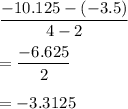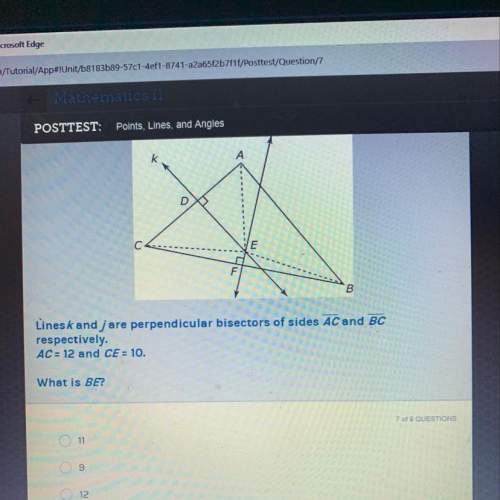Calculate the average rate of change for the graphed sequence from n = 2 to n = 4.
graphed seq...

Mathematics, 01.09.2019 15:30 COOLIOMARIS
Calculate the average rate of change for the graphed sequence from n = 2 to n = 4.
graphed sequence showing (1, -3), (2, -3.5), (3, -6.75), (4, -10.125), (5, -15.1875), (6, -22.78125) a. -6.625
b. -03.3125
c. -3.0
d. -2.0

Answers: 2


Another question on Mathematics

Mathematics, 21.06.2019 20:00
Someone answer asap for ! the boiling point of water at an elevation of 0 feet is 212 degrees fahrenheit (°f). for every 1,000 feet of increase in elevation, the boiling point of water decreases by about 2°f. which of the following represents this relationship if b is the boiling point of water at an elevation of e thousand feet? a. e = 2b - 212 b. b = 2e - 212 c. e = -2b + 212 d. b = -2e + 212
Answers: 1

Mathematics, 21.06.2019 20:30
Aregular pan has a length that is 4/3 the width. the total area of the pan is 432in.2. what is the width of the cake pan?
Answers: 1

Mathematics, 21.06.2019 22:30
I’ve been trying all day to figure this puzzle out. i need the work for it aswell. it is a factoring polynomials tarsia. the image is below.
Answers: 3

Mathematics, 21.06.2019 22:30
If a and −a are numbers on the number line, which expression must give the distance between them? a) 0 b) a c) |2a| d) |a|
Answers: 1
You know the right answer?
Questions









Health, 13.10.2019 20:50

Mathematics, 13.10.2019 20:50

Mathematics, 13.10.2019 20:50


Mathematics, 13.10.2019 20:50




Mathematics, 13.10.2019 20:50

History, 13.10.2019 20:50


 to
to  is defined as:
is defined as:
 .
.


